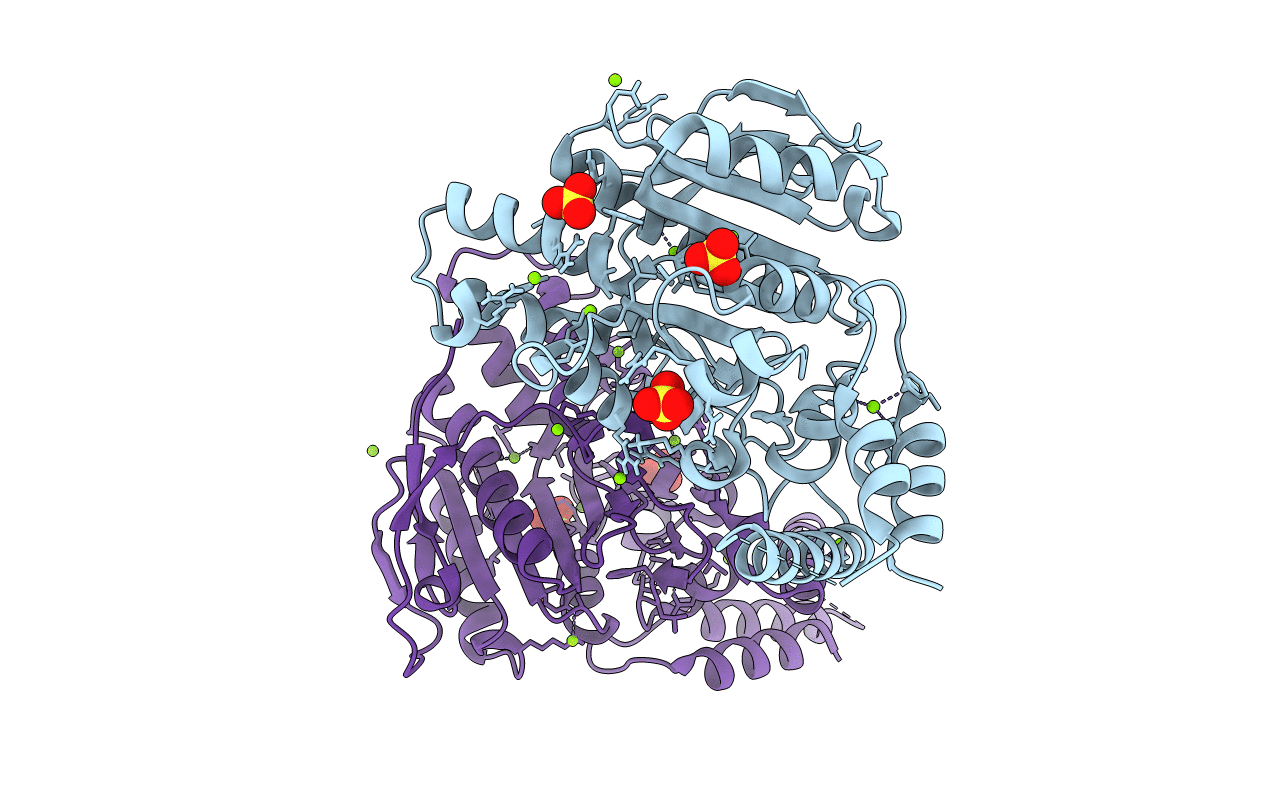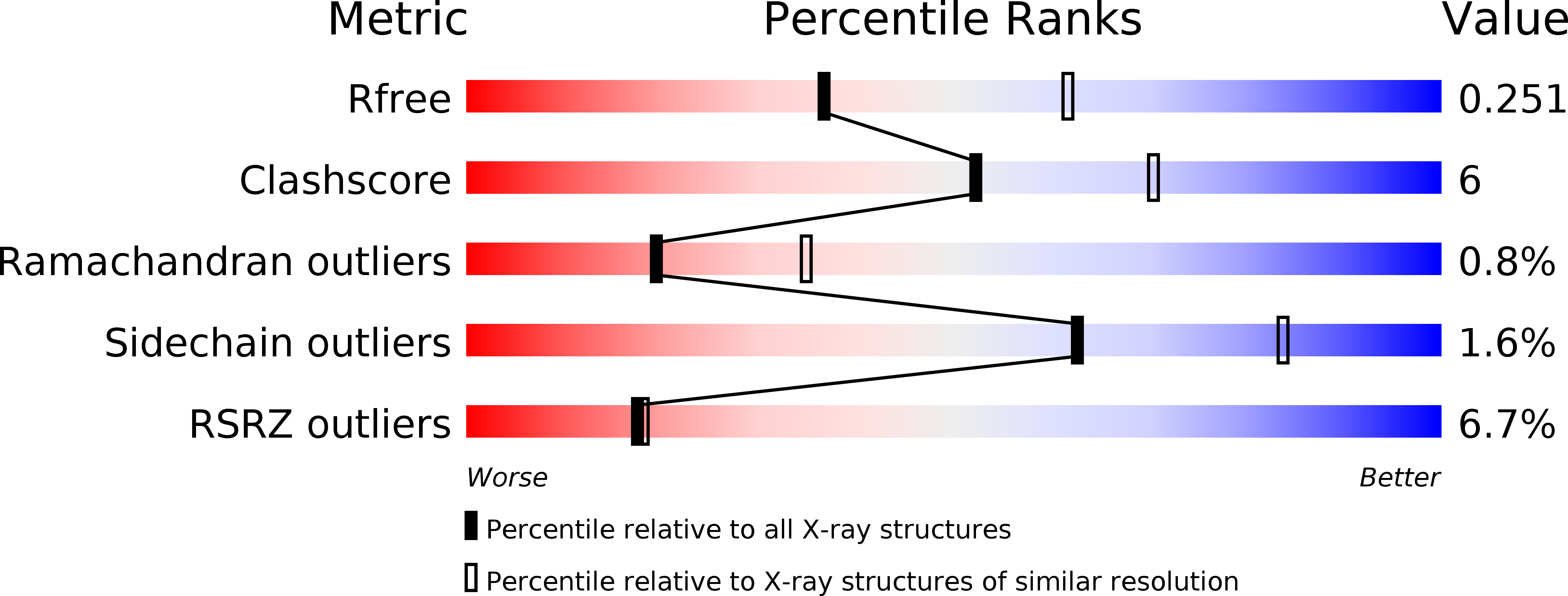
Deposition Date
2017-09-05
Release Date
2018-06-20
Last Version Date
2024-03-27
Entry Detail
PDB ID:
5YBH
Keywords:
Title:
Structural of the highly conserved ATPase from type III secretion system of bacterial pathogens
Biological Source:
Source Organism:
Shigella flexneri (Taxon ID: 623)
Host Organism:
Method Details:
Experimental Method:
Resolution:
2.50 Å
R-Value Free:
0.24
R-Value Work:
0.19
R-Value Observed:
0.19
Space Group:
P 32 2 1


